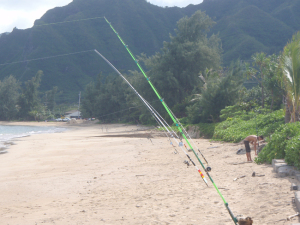Post
Lots of Life in the Seaweed found on Beaches
Florida Fishing Articles, Regional Fishing, United States Fishing Articles | Florida theangler PM

The material, usually in a line where the waves roll in, is known as beach wrack.
When first setting eyes on wrack, you may think it is only dried, dying seaweed. But it is very much alive and filled with sea organisms that are essential to beach life and the creatures that live there.
Marine organisms that wash up with this wrack are an important part of a beach ecosystem. Tiny crabs, sea cucumbers, seeds and pods are only a few of the things you can find in wrack.
Once, while walking the shore at Bahia Honda State Park in the Florida Keys, I found a brown hamburger bean. That’s right, a hamburger bean! It is circular in shape, like a marble, with a thick brown or black line that goes around its center. On each side of the thick line the color is a lighter brown, making it look like a hamburger bun. These little beans are from tropical rain forests and are native to the West Indies and western Africa. Can you believe the things we find on Florida beaches travel that far?
Another neat little treasure I found in beach wrack was on St. Augustine Beach just a few weeks ago. While pushing my toes through the wrack I spotted a purse crab. These crabs get their name because female purse crabs have a purse-like chamber for holding their eggs. The little crabs live in shallow, sandy environments like beaches and are often found washed ashore in wrack.
Not only can you find neat sea critters, shells, seeds and birds near beach wrack, but wrack is also the first stage in forming sand dunes. Sand dunes are natural barriers against wind and water, and prevent erosion. They form when wrack starts to collect blowing sand. As sand and other plant material collect in the wrack, the plant material can start to sprout and root. This continual process is how dunes form.
So now you know that beach wrack isn’t just icky seaweed that sits on the shore; it is a beautiful ecosystem important to the beach and beach life, as well as a place for unique finds and hours of curiosity. Have fun searching the wrack!
